The automotive industry stands at a fascinating crossroads where traditional reliability meets cutting-edge technology. While manufacturers have spent decades perfecting mechanical systems, the rapid integration of complex infotainment systems, advanced driver assistance technologies, and connected vehicle features has created an unexpected paradox: sometimes the most expensive, feature-laden vehicles are less reliable than their stripped-down counterparts.
Vehicle owners are experiencing lower levels of vehicle dependability after three years of ownership, according to the J.D. Power 2024 U.S. Vehicle Dependability Study, with the industry average increasing 4 problems per 100 vehicles year over year to 190 PP100 from 2023. This decline in long-term dependability is particularly pronounced in luxury vehicles equipped with extensive technological features.
The irony is striking: consumers paying premium prices for fully loaded trims often experience more frustration than those who choose basic models. Infotainment systems were designed to enhance the driving experience, but too often, they’ve done the opposite frustrating users with clunky designs, sluggish performance, or outright failures.
From screen freezing, Bluetooth failures, audio glitches, and GPS errors to random reboots, unresponsive touchscreens, and system crashes, technology-heavy vehicles are proving that more features don’t necessarily mean better ownership experiences.
Base model vehicles, with their simpler mechanical systems and fewer electronic components, often provide superior long-term reliability. These vehicles focus on core automotive functions without the complexity of multiple interconnected systems that can fail.
Meanwhile, fully loaded trims, despite their impressive feature lists and premium pricing, frequently suffer from the integration challenges inherent in modern automotive technology. This comprehensive analysis explores both ends of this spectrum, examining vehicles that exemplify reliable simplicity versus those that struggle with technological complexity.
5 Reliable Base Models
These exceptionally engineered entry-level vehicles feature proven mechanical systems and simplified electronics that maintain consistent operation through years of daily use without complex failure points.
Their thoughtful design includes time-tested components and straightforward control systems that resist the stress concentrations typically created by overcomplicated electronic interfaces and unnecessary technological additions.
From basic climate controls that operate reliably to manual transmission options that eliminate complex failure modes, these remarkable base models continue functioning smoothly without developing electronic gremlins.
Owners report decades of trouble-free operation with these dependable transportation solutions a testament to engineering simplicity that proves its worth through consistent reliability and minimal maintenance requirements throughout ownership.
1. Toyota Camry LE
The Toyota Camry LE represents the gold standard of reliable base model sedans, embodying Toyota’s philosophy of prioritizing dependability over flashy features. This entry-level trim strips away unnecessary complexity while maintaining the essential elements that make the Camry one of America’s best-selling vehicles.
The LE’s approach to automotive engineering focuses on proven technologies and time-tested components that have been refined over decades of production. At the heart of the Camry LE lies Toyota’s naturally aspirated 2.5-liter four-cylinder engine, producing 203 horsepower and 184 lb-ft of torque.
This Dynamic Force engine represents Toyota’s commitment to reliability through evolutionary rather than revolutionary design. Unlike turbocharged alternatives found in many competitors, this naturally aspirated powerplant reduces complexity by eliminating turbocharger components, intercoolers, and the additional cooling systems required for forced induction.
The engine’s design prioritizes longevity, with features like direct and port injection that clean intake valves and reduce carbon buildup, a common issue in direct-injection-only engines. The transmission paired with this engine is Toyota’s eight-speed automatic, a unit that has proven its reliability across Toyota’s global lineup.
This transmission avoids the complexity of continuously variable transmissions (CVT) found in many competitors, instead relying on traditional planetary gearsets and proven hydraulic controls. The transmission’s programming prioritizes smooth operation and longevity over aggressive performance characteristics, contributing to the Camry LE’s reputation for trouble-free ownership.
The Camry LE’s interior technology deliberately avoids cutting-edge features that might compromise reliability. The standard infotainment system is Toyota’s Audio Plus with a 7-inch touchscreen, which provides essential connectivity features including Apple CarPlay, Android Auto, and Amazon Alexa compatibility without venturing into more complex territory.
The system’s simplicity is its strength; fewer features mean fewer potential failure points. Physical controls for climate and audio functions remain present, allowing drivers to operate these systems without relying solely on touchscreen interfaces that might become unresponsive.
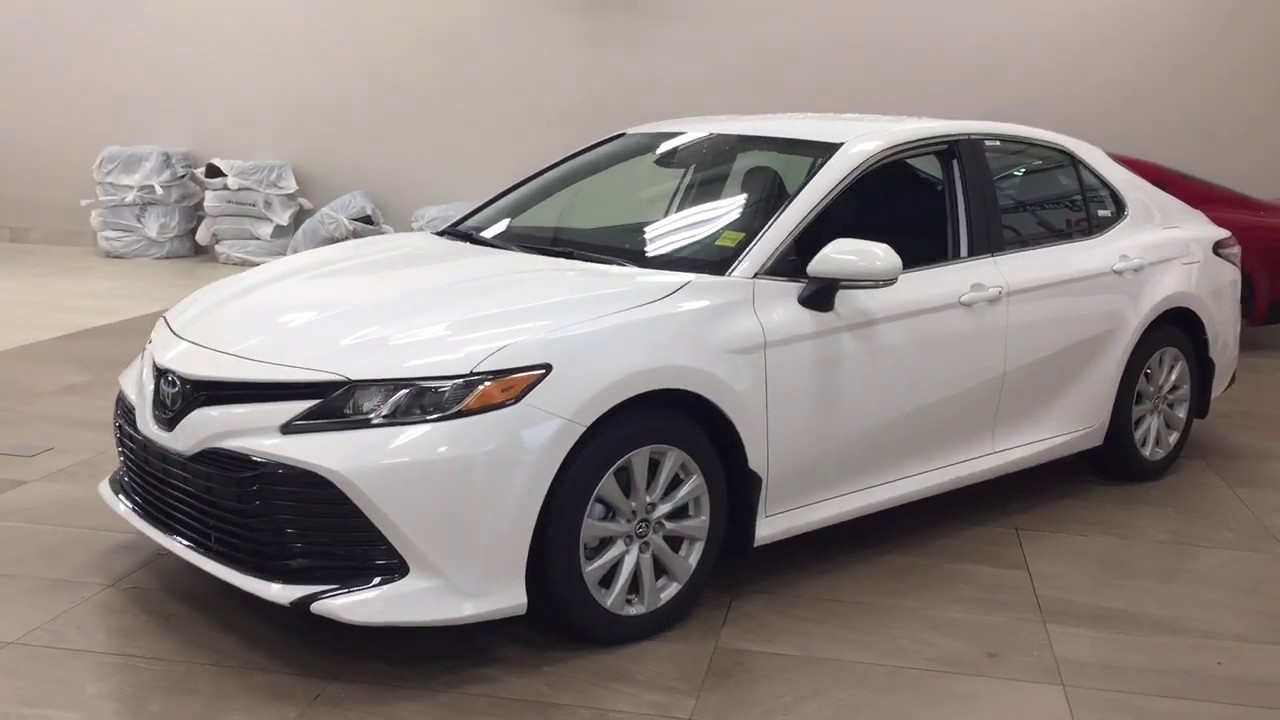
Toyota Safety Sense 2.0 comes standard on the Camry LE, but the implementation focuses on proven radar and camera-based systems rather than experimental technologies.
The suite includes adaptive cruise control, lane keeping assist, automatic emergency braking, and road sign recognition. These features utilize well-established sensor technologies and conservative programming that prioritizes functionality over aggressive intervention.
The system’s reliability stems from Toyota’s methodical approach to safety technology deployment, thoroughly testing features across multiple model years before implementation.
The Camry LE’s suspension system employs a MacPherson strut front setup and multi-link rear configuration, representing a balance between ride quality and manufacturing simplicity.
The suspension components are designed for durability rather than ultimate performance, using proven materials and manufacturing processes that have been refined over decades.
This approach results in predictable maintenance schedules and readily available replacement parts, contributing to the vehicle’s long-term ownership advantages.
From a reliability standpoint, the Camry LE benefits from Toyota’s conservative engineering philosophy and extensive global production experience.
The vehicle’s components are designed with generous safety margins and undergo rigorous testing before implementation. Toyota’s approach to quality control emphasizes consistency and repeatability, with manufacturing processes that minimize variation between individual vehicles.
This attention to detail extends to supplier relationships, where Toyota maintains strict quality standards and long-term partnerships that ensure consistent component quality.
The Camry LE’s maintenance requirements are straightforward and well-documented, with service intervals that reflect the vehicle’s reliable design. Engine oil changes every 10,000 miles, transmission fluid replacement every 100,000 miles, and coolant system service every 100,000 miles represent reasonable maintenance schedules that don’t burden owners with excessive costs.
The vehicle’s widespread availability means that parts and services are accessible through Toyota’s extensive dealer network and independent service providers.
2. Honda Civic LX
The Honda Civic LX stands as a testament to Honda’s engineering philosophy of maximizing reliability through intelligent simplification. This base model represents Honda’s approach to creating vehicles that deliver exceptional longevity while maintaining affordability and practicality.
The Civic LX’s design prioritizes mechanical simplicity and proven technologies over cutting-edge features that might compromise long-term dependability.
Honda’s 2.0-liter naturally aspirated four-cylinder engine powers the Civic LX, producing 158 horsepower and 138 lb-ft of torque. This powerplant represents Honda’s commitment to reliability through evolutionary design, incorporating lessons learned from millions of miles of real-world operation.
The engine features Honda’s VTEC variable valve timing system, a technology that has been refined over decades to provide both performance and efficiency benefits while maintaining mechanical simplicity.
The naturally aspirated design eliminates the complexity and potential failure points associated with turbocharging, including heat management challenges and additional cooling system requirements.
The Civic LX utilizes Honda’s continuously variable transmission (CVT), but with a crucial difference from many competitors Honda’s CVT design emphasizes durability over maximum efficiency.
The transmission features a torque converter for improved low-speed operation and better reliability compared to pure CVT designs. Honda’s approach to CVT programming avoids the aggressive efficiency strategies that can stress transmission components, instead focusing on smooth operation and longevity.
The transmission’s design includes robust internal components and conservative operating parameters that contribute to the Civic’s reputation for trouble-free ownership.
Interior technology in the Civic LX reflects Honda’s philosophy of functional simplicity. The standard infotainment system features a 7-inch touchscreen with essential connectivity options including Apple CarPlay and Android Auto.
The system’s interface prioritizes ease of use and quick response times over complex features that might introduce reliability concerns. Physical controls for climate and audio functions remain prominent, allowing drivers to operate these systems without relying entirely on touchscreen interfaces. This dual approach provides redundancy and ensures that core vehicle functions remain accessible even if touchscreen components experience issues.
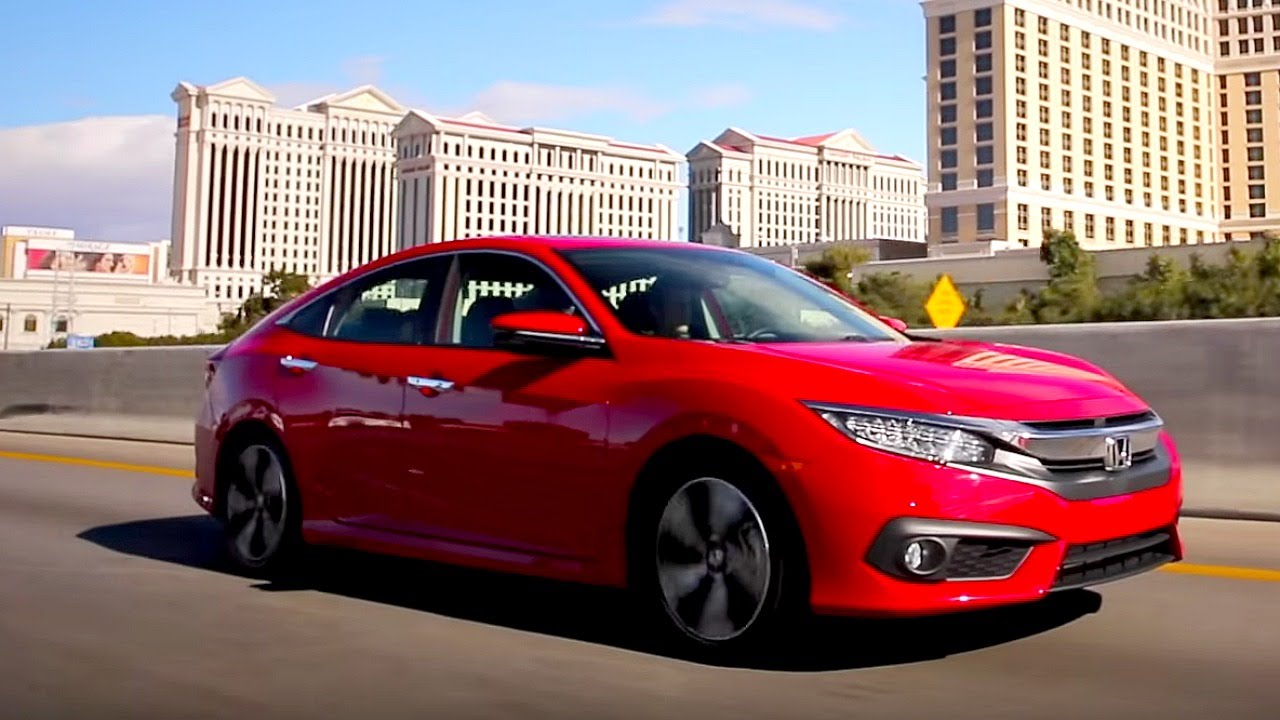
Honda Sensing safety technology comes standard on the Civic LX, representing Honda’s commitment to safety without compromising reliability. The system includes collision mitigation braking, road departure mitigation, adaptive cruise control, and traffic sign recognition.
Honda’s implementation of these features emphasizes conservative operation and proven sensor technologies rather than experimental approaches. The system’s reliability benefits from Honda’s extensive testing and gradual feature deployment strategy, which allows for thorough validation before widespread implementation.
The Civic LX’s structural design prioritizes durability through proven materials and manufacturing processes. The vehicle’s body structure utilizes high-strength steel in strategic locations while maintaining manufacturability and repairability.
Honda’s approach to rust prevention includes comprehensive corrosion protection measures that extend the vehicle’s structural integrity over time. The paint system and exterior components are designed to withstand environmental challenges while maintaining appearance and functionality.
Suspension components in the Civic LX follow Honda’s philosophy of balancing performance with reliability. The front MacPherson strut and rear multi-link setup provide good ride quality and handling characteristics while utilizing proven designs that minimize maintenance requirements.
Component specifications emphasize durability over ultimate performance, with robust bushings, joints, and mounting hardware that can withstand extended use without degradation.
The Civic LX’s electrical system design reflects Honda’s conservative approach to automotive electronics. The vehicle’s wiring harnesses and control modules are designed with generous capacity margins and robust connectors that resist environmental degradation.
Power distribution strategies avoid complex integration between multiple systems, reducing the potential for cascading failures that can affect multiple vehicle functions simultaneously.
Honda’s quality control processes for the Civic LX emphasize consistency and attention to detail throughout the manufacturing process. The company’s production systems incorporate extensive quality checks and validation procedures that ensure each vehicle meets Honda’s reliability standards.
Supplier relationships are maintained through strict quality requirements and long-term partnerships that promote consistent component quality across the supply chain.
From a maintenance perspective, the Civic LX is designed for straightforward and affordable service requirements. Engine oil changes every 7,500 miles, transmission fluid replacement every 100,000 miles, and coolant system service every 100,000 miles represent reasonable maintenance intervals that don’t burden owners with excessive costs.
The vehicle’s widespread availability ensures that parts and service are accessible through Honda’s dealer network and independent service providers.
3. Subaru Outback Base
The Subaru Outback Base model exemplifies Subaru’s commitment to creating vehicles that prioritize reliability and functionality over luxury features. This entry-level trim focuses on delivering Subaru’s core competencies all-wheel drive capability, safety, and durability without the complexity of advanced technology packages that might compromise long-term dependability.
The Outback Base represents a thoughtful approach to automotive engineering that emphasizes proven technologies and conservative design philosophies.
At the heart of the Outback Base lies Subaru’s 2.5-liter naturally aspirated BOXER four-cylinder engine, producing 182 horsepower and 176 lb-ft of torque. This horizontally opposed engine design has been refined over the decades to provide exceptional balance, low center of gravity, and smooth operation.
The naturally aspirated configuration eliminates the complexity and potential failure points associated with turbocharging, including additional cooling requirements, intercooler systems, and the higher operating temperatures that can stress engine components.
Subaru’s BOXER engine design inherently provides better balance than traditional inline or V-configuration engines, reducing vibration and mechanical stress throughout the drivetrain.
The Outback Base features Subaru’s Lineartronic continuously variable transmission (CVT), but with design characteristics that prioritize durability over maximum efficiency. Unlike CVT systems that aggressively pursue fuel economy gains, Subaru’s implementation focuses on smooth operation and longevity.
The transmission includes a robust torque converter and chain-driven design that can handle the demands of all-wheel drive operation. Subaru’s CVT programming avoids the aggressive efficiency strategies that can stress transmission components, instead emphasizing predictable operation and reduced wear characteristics.
Subaru’s symmetrical all-wheel drive system comes standard on the Outback Base, representing one of the most reliable all-wheel drive implementations in the industry.
The system’s design eliminates the complexity of part-time or reactive all-wheel drive systems, instead providing constant power distribution to all four wheels.
This approach reduces stress on individual components and provides consistent traction characteristics without the need for complex control systems that might introduce reliability concerns. The system’s mechanical simplicity contributes to its reputation for trouble-free operation even in challenging conditions.

The Outback Base’s interior technology reflects Subaru’s philosophy of functional design over flashy features. The standard infotainment system features a 6.5-inch touchscreen with essential connectivity options including Apple CarPlay and Android Auto.
The system’s interface prioritizes ease of use and reliability over complex features that might introduce potential failure points. Physical controls for climate and audio functions remain prominent, providing drivers with direct access to essential systems without relying solely on touchscreen interfaces.
EyeSight driver assistance technology comes standard on the Outback Base, representing Subaru’s commitment to safety through proven technologies. The system utilizes dual cameras mounted behind the windshield to provide adaptive cruise control, pre-collision braking, lane departure warning, and lane keep assist.
Subaru’s implementation of these features emphasizes conservative operation and proven sensor technologies rather than experimental approaches. The system’s reliability benefits from Subaru’s extensive real-world testing and gradual feature refinement over multiple model years.
The Outback Base’s structural design prioritizes durability through Subaru’s ring-shaped reinforcement frame and strategic use of high-strength steel. The vehicle’s body structure is engineered to withstand the demands of varied terrain and weather conditions while maintaining structural integrity over time.
Subaru’s approach to corrosion protection includes comprehensive undercoating and cavity wax application that extends the vehicle’s resistance to environmental degradation.
Suspension components in the Outback Base reflect Subaru’s focus on balancing comfort with durability. The front MacPherson strut and rear double wishbone setup provide excellent ride quality and handling characteristics while utilizing proven designs that minimize maintenance requirements.
Component specifications emphasize longevity over ultimate performance, with robust bushings, joints, and mounting hardware designed to withstand extended use in various conditions.
The Outback Base’s electrical system design follows Subaru’s conservative approach to automotive electronics. Wiring harnesses and control modules are designed with generous capacity margins and robust connectors that resist environmental degradation.
The electrical architecture avoids complex integration between multiple systems, reducing the potential for cascading failures that could affect multiple vehicle functions simultaneously.
Subaru’s quality control processes for the Outback Base emphasize consistency and attention to detail throughout the manufacturing process. The company’s production systems incorporate extensive quality checks and validation procedures that ensure each vehicle meets Subaru’s reliability standards.
The company’s approach to supplier relationships maintains strict quality requirements and long-term partnerships that promote consistent component quality across the supply chain.
From a maintenance perspective, the Outback Base is designed for straightforward service requirements that reflect its intended use as a versatile family vehicle. Engine oil changes every 6,000 miles, transmission fluid replacement every 100,000 miles, and differential service every 30,000 miles represent reasonable maintenance intervals that account for the vehicle’s all-wheel drive system complexity.
The vehicle’s widespread availability ensures that parts and service are accessible through Subaru’s dealer network and independent service providers familiar with the brand’s unique characteristics.
4. Mazda CX-5 Sport
The Mazda CX-5 Sport represents Mazda’s philosophy of creating vehicles that deliver exceptional driving dynamics and reliability through intelligent engineering rather than complex technology.
This base model SUV embodies Mazda’s KODO design language and SKYACTIV technology platform while maintaining the simplicity and dependability that define reliable automotive ownership. The CX-5 Sport’s approach prioritizes mechanical excellence and proven technologies over cutting-edge features that might compromise long-term reliability.
Mazda’s SKYACTIV-G 2.5-liter naturally aspirated four-cylinder engine powers the CX-5 Sport, producing 187 horsepower and 186 lb-ft of torque. This powerplant represents Mazda’s commitment to efficiency and reliability through advanced naturally aspirated technology rather than turbocharging.
The engine features a high compression ratio of 13:1, which requires precise manufacturing tolerances and high-quality materials but delivers exceptional efficiency and performance without the complexity of forced induction. The naturally aspirated design eliminates potential failure points associated with turbocharger systems, including heat management challenges and additional cooling requirements.
The CX-5 Sport utilizes Mazda’s SKYACTIV-Drive six-speed automatic transmission, which combines the efficiency benefits of a CVT with the reliability characteristics of a traditional automatic. This transmission design avoids the durability concerns associated with pure CVT systems while providing smooth operation and excellent fuel economy.
The transmission’s programming emphasizes natural, linear acceleration characteristics that provide predictable operation and reduced component stress. Mazda’s approach to transmission design prioritizes longevity through robust internal components and conservative operating parameters.
Interior technology in the CX-5 Sport reflects Mazda’s philosophy of driver-focused design without unnecessary complexity. The standard infotainment system features a 7-inch display with essential connectivity options including Apple CarPlay and Android Auto. The system’s interface prioritizes ease of use and quick response times over complex features that might introduce reliability concerns.
Mazda’s commitment to physical controls is evident in the retention of knobs and buttons for climate and audio functions, providing drivers with direct access to essential systems without relying entirely on touchscreen interfaces.

Mazda’s i-ACTIVSENSE safety technology comes standard on the CX-5 Sport, representing the company’s approach to safety through proven technologies and conservative implementation. The system includes smart brake support, blind spot monitoring, rear cross-traffic alert, and lane departure warning.
Mazda’s implementation of these features emphasizes reliable operation and proven sensor technologies rather than aggressive intervention strategies. The system’s reliability benefits from Mazda’s methodical approach to safety technology deployment and extensive testing procedures.
The CX-5 Sport’s structural design prioritizes both safety and durability through Mazda’s SKYACTIV-Body architecture. The vehicle’s body structure utilizes high-strength steel in strategic locations while maintaining optimal weight distribution and structural integrity.
Mazda’s approach to corrosion protection includes comprehensive treatment of critical areas and strategic material selection that extends the vehicle’s resistance to environmental degradation. The body structure is engineered to provide excellent crashworthiness while maintaining long-term durability.
All-wheel drive is available on the CX-5 Sport through Mazda’s i-ACTIV AWD system, which provides intelligent torque distribution based on driving conditions. The system’s design emphasizes efficiency and reliability through predictive control algorithms that anticipate the need for all-wheel drive engagement.
Unlike reactive systems that wait for a slip to occur, i-ACTIV AWD proactively distributes torque to maintain optimal traction while minimizing component stress and wear.
Suspension components in the CX-5 Sport follow Mazda’s philosophy of balancing performance with reliability. The front MacPherson strut and rear multi-link setup provide excellent ride quality and handling characteristics while utilizing proven designs that minimize maintenance requirements.
Component specifications emphasize durability through robust bushings, joints, and mounting hardware designed to withstand extended use without degradation.
The CX-5 Sport’s electrical system design reflects Mazda’s conservative approach to automotive electronics. Wiring harnesses and control modules are designed with generous capacity margins and robust connectors that resist environmental degradation.
The electrical architecture avoids complex integration between multiple systems, reducing the potential for cascading failures that could affect multiple vehicle functions simultaneously.
Mazda’s quality control processes for the CX-5 Sport emphasize consistency and attention to detail throughout the manufacturing process. The company’s production systems incorporate extensive quality checks and validation procedures that ensure each vehicle meets Mazda’s reliability standards.
Mazda’s approach to supplier relationships maintains strict quality requirements and long-term partnerships that promote consistent component quality across the supply chain.
From a maintenance perspective, the CX-5 Sport is designed for straightforward service requirements that reflect its intended use as a versatile family SUV.
Engine oil changes every 7,500 miles, transmission fluid replacement every 100,000 miles, and differential service every 30,000 miles for AWD models represent reasonable maintenance intervals.
The vehicle’s widespread availability ensures that parts and service are accessible through Mazda’s dealer network and independent service providers familiar with the brand’s engineering philosophy.
Also Read: 5 Toyota Hybrids With Long Lives and 5 That Constantly Glitch
5. Nissan Altima S
The Nissan Altima S represents Nissan’s approach to creating reliable, affordable transportation that prioritizes essential features over complex technology. This base model sedan embodies Nissan’s commitment to providing dependable vehicles that deliver fundamental transportation needs without the complexity of advanced systems that might compromise long-term reliability.
The Altima S’s design philosophy emphasizes proven technologies and conservative engineering approaches that have been validated through extensive real-world use.
Nissan’s 2.5-liter naturally aspirated four-cylinder engine powers the Altima S, producing 188 horsepower and 180 lb-ft of torque. This powerplant represents Nissan’s commitment to reliability through evolutionary design and proven technology.
The engine features direct injection for improved efficiency and performance while maintaining the simplicity advantages of natural aspiration. The design eliminates the complexity and potential failure points associated with turbocharging, including additional cooling requirements, intercooler systems, and the higher operating temperatures that can stress engine components over time.
The Altima S utilizes Nissan’s Xtronic continuously variable transmission (CVT), but with design characteristics that prioritize durability and reliability over maximum efficiency.
Nissan’s CVT implementation includes a robust torque converter and steel belt design that can handle the demands of daily driving while providing smooth operation.
The transmission’s programming avoids aggressive efficiency strategies that can stress components, instead focusing on predictable operation and reduced wear characteristics. Nissan’s approach to CVT design emphasizes longevity through conservative operating parameters and robust internal components.
Interior technology in the Altima S reflects Nissan’s philosophy of functional design without unnecessary complexity. The standard infotainment system features a 7-inch touchscreen with essential connectivity options including Apple CarPlay and Android Auto. The system’s interface prioritizes ease of use and reliability over complex features that might introduce potential failure points.
Physical controls for climate and audio functions remain prominent, providing drivers with direct access to essential systems without relying solely on touchscreen interfaces that might become unresponsive.

Nissan Safety Shield 360 comes standard on the Altima S, representing Nissan’s commitment to safety through proven technologies and conservative implementation.
The system includes automatic emergency braking, blind spot warning, rear cross traffic alert, lane departure warning, and high beam assist. Nissan’s implementation of these features emphasizes reliable operation and proven sensor technologies rather than aggressive intervention strategies.
The system’s reliability benefits from Nissan’s extensive testing and gradual feature refinement over multiple model years. The Altima S’s structural design prioritizes durability through Nissan’s zone body construction and strategic use of high-strength steel.
The vehicle’s body structure is engineered to provide excellent crashworthiness while maintaining structural integrity over time. Nissan’s approach to corrosion protection includes comprehensive treatment of critical areas and strategic material selection that extends the vehicle’s resistance to environmental degradation.
The body structure incorporates crumple zones and reinforcement areas that protect occupants while maintaining long-term durability. Suspension components in the Altima S follow Nissan’s philosophy of balancing comfort with reliability.
The front MacPherson strut and rear multi-link setup provide good ride quality and handling characteristics while utilizing proven designs that minimize maintenance requirements.
Component specifications emphasize durability through robust bushings, joints, and mounting hardware designed to withstand extended use without degradation. The suspension tuning prioritizes comfort and stability over ultimate performance, contributing to the vehicle’s reputation for smooth, predictable operation.
The Altima S’s electrical system design reflects Nissan’s conservative approach to automotive electronics. Wiring harnesses and control modules are designed with generous capacity margins and robust connectors that resist environmental degradation.
The electrical architecture avoids complex integration between multiple systems, reducing the potential for cascading failures that could affect multiple vehicle functions simultaneously. Power distribution strategies emphasize simplicity and reliability over advanced features that might introduce potential failure points.
Nissan’s quality control processes for the Altima S emphasize consistency and attention to detail throughout the manufacturing process. The company’s production systems incorporate extensive quality checks and validation procedures that ensure each vehicle meets Nissan’s reliability standards.
Nissan’s approach to supplier relationships maintains quality requirements and partnerships that promote consistent component quality across the supply chain.
From a maintenance perspective, the Altima S is designed for straightforward service requirements that reflect its intended use as affordable family transportation.
Engine oil changes every 5,000 miles, transmission fluid replacement every 60,000 miles, and coolant system service every 100,000 miles represent reasonable maintenance intervals that don’t burden owners with excessive costs.
The vehicle’s widespread availability ensures that parts and service are accessible through Nissan’s extensive dealer network and independent service providers familiar with the brand’s engineering approaches.
The Altima S’s reliability advantages stem from Nissan’s focus on proven technologies and conservative engineering approaches. The vehicle’s design avoids cutting-edge features that might introduce reliability concerns, instead emphasizing well-established systems and components that have been validated through extensive use.
This approach results in predictable ownership costs and reduced likelihood of unexpected failures, making the Altima S an attractive option for buyers prioritizing dependability over advanced features.
5 Fully Loaded Trims With Constant Tech Fails
Their over-engineered technology features inadequate quality control, insufficient testing protocols, or manufacturing deficiencies that accelerate electronic system deterioration under normal operating conditions.
From infotainment screens that freeze randomly to advanced driver assistance systems that malfunction unpredictably, these luxury trims consistently develop expensive electronic problems that frustrate owners and technicians alike.
The recurring nature of these failures demonstrates how excessive technological complexity can transform premium vehicles into unreliable money pits that require specialized knowledge and costly repairs to maintain basic functionality.
The BMW 7 Series M Sport’s iDrive system experiences frequent software crashes and hardware failures that disable essential vehicle functions while requiring expensive dealer programming and module replacements.
The Mercedes S-Class AMG’s COMAND system develops touch screen failures and navigation glitches that render the entire infotainment system unusable, requiring costly control unit replacements.
The Audi A8 L’s MMI system suffers from chronic connectivity issues and display malfunctions that create frustrating user experiences and expensive repair bills at specialized service centers.
The Cadillac Escalade Platinum’s CUE system is notorious for freezing screens and unresponsive controls that require complete system resets and frequent software updates to maintain basic operation.
The Lincoln Navigator Black Label’s SYNC system experiences constant Bluetooth connectivity problems and voice command failures that make hands-free operation unreliable and require ongoing dealer intervention.
1. BMW X7 xDrive50i M Sport
The BMW X7 xDrive50i M Sport represents the pinnacle of BMW’s luxury SUV offerings, packed with cutting-edge technology and premium features that unfortunately demonstrate the reliability challenges facing modern luxury vehicles.
This fully loaded flagship suffers from the integration complexity inherent in vehicles that attempt to incorporate every available automotive technology into a single platform. The X7’s extensive feature set creates multiple potential failure points and system interactions that can cascade into significant reliability issues.
BMW’s iDrive 8 infotainment system anchors the X7’s technology suite, featuring a massive 12.3-inch touchscreen display combined with a 12.3-inch digital instrument cluster. While visually impressive, this system has proven problematic for many owners.
The iDrive 8 platform attempts to integrate navigation, entertainment, vehicle settings, climate control, and smartphone connectivity into a single interface, creating complexity that often results in system freezes, slow response times, and complete system failures.
The over-reliance on touchscreen controls means that when the system fails, owners lose access to essential vehicle functions including climate control and audio systems.
The X7’s gesture control system exemplifies the problematic nature of implementing cutting-edge technology before it’s fully mature. This system allows drivers to control various functions through hand gestures, but the recognition software frequently misinterprets movements, leading to unintended system activations.
The gesture sensors can become contaminated with dust or affected by lighting conditions, causing erratic behavior that frustrates owners and requires frequent cleaning or calibration. The system’s complexity means that simple repairs often require expensive dealer visits and software updates.
BMW’s Driving Assistant Professional package, standard on the M Sport trim, incorporates numerous advanced driver assistance systems that frequently malfunction.
The system includes traffic jam assist, extended traffic jam assist, lane change assist, and active cruise control with stop-and-go functionality. However, these features often provide false warnings, unexpected braking interventions, or complete system shutdowns.
The integration between multiple sensors, cameras, and radar systems creates numerous potential failure points, and when one component fails, it can disable multiple safety features simultaneously.
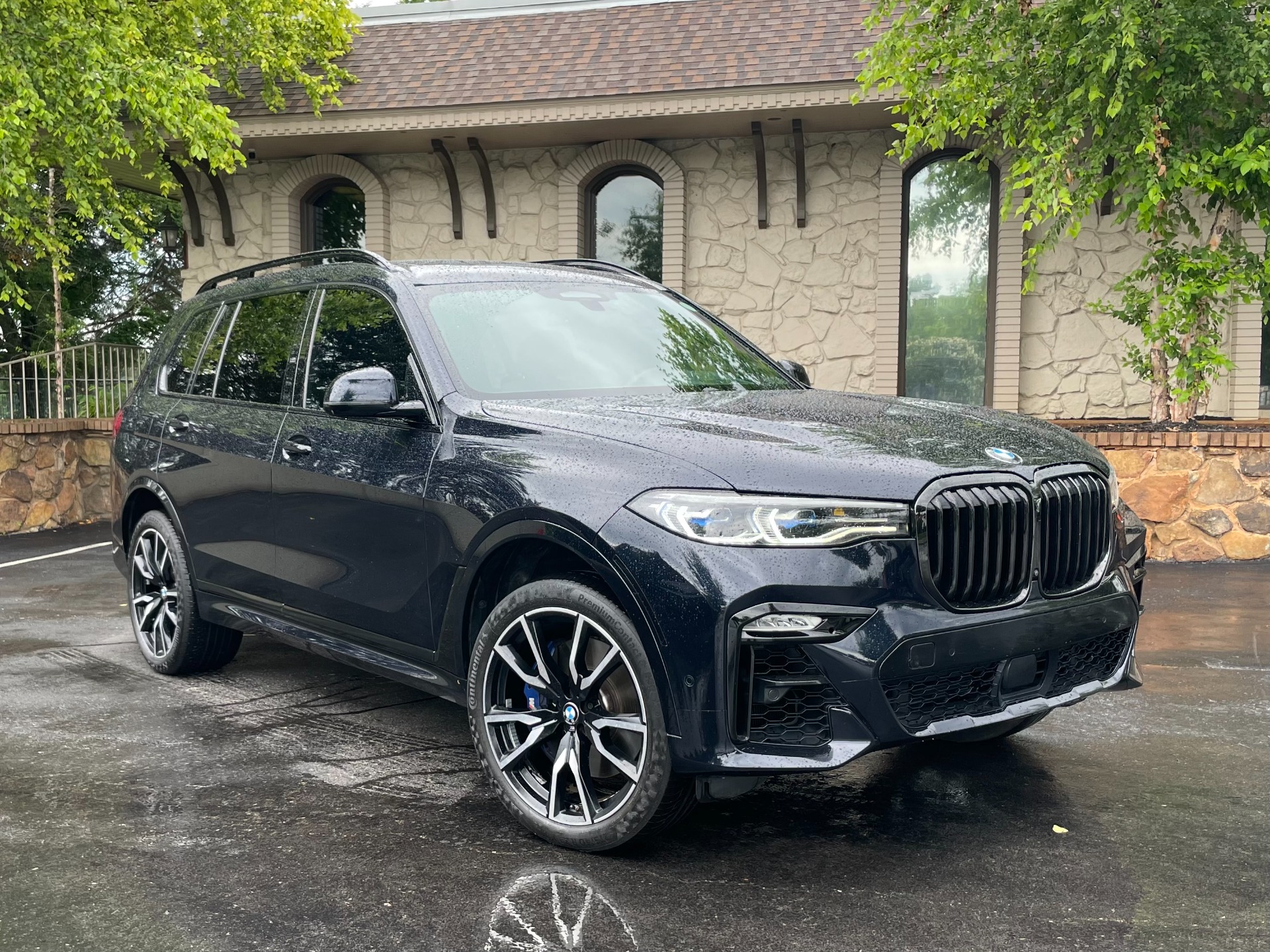
The X7’s air suspension system represents another area of frequent failure. The complex electronically controlled air springs, compressor systems, and height sensors are prone to leaks, compressor failures, and sensor malfunctions.
When these systems fail, the vehicle may become stuck in emergency mode, limiting ride height adjustment and potentially affecting handling characteristics.
Repair costs for air suspension components are typically substantial, and the system’s complexity means that diagnosing problems often requires specialized equipment and extensive labor time.
BMW’s ConnectedDrive services integrate the X7 with cloud-based features including remote start, vehicle status monitoring, and concierge services.
While these features sound appealing, they frequently suffer from connectivity issues, server problems, and software glitches that render them unreliable.
The system’s dependence on cellular connectivity means that coverage issues can affect functionality, and software updates sometimes introduce new bugs while attempting to fix existing problems.
The X7’s advanced lighting systems showcase the reliability challenges of implementing complex automotive technologies. The adaptive LED headlights include numerous control modules, sensors, and motorized components that can fail individually or in combination.
When these systems malfunction, replacement costs can be extremely high due to the integrated nature of the components and the requirement for specialized calibration equipment. The lighting systems are particularly vulnerable to moisture intrusion and electrical issues that can affect multiple functions simultaneously.
Interior technology features in the X7 M Sport, including the panoramic sunroof, power-adjustable seats with massage functions, and ambient lighting systems, represent additional potential failure points.
The panoramic sunroof’s complex motor and track system is prone to mechanical failures that can result in water leaks or complete system inoperability. The power seats’ numerous motors, sensors, and control modules create multiple potential failure points, and when these systems fail, repairs often require extensive disassembly of seat components.
The X7’s thermal management systems demonstrate the complexity challenges facing modern luxury vehicles. The vehicle incorporates multiple climate zones, heated and cooled seats, steering wheel heating, and HVAC systems that require precise integration and control.
When these systems malfunction, diagnosing problems can be extremely difficult due to the interconnected nature of the components and the multiple control modules involved in their operation.
BMW’s approach to software integration in the X7 creates reliability challenges through over-the-air updates that can introduce new problems while attempting to fix existing issues.
The vehicle’s numerous control modules and software-dependent systems mean that updates can have unintended consequences, potentially affecting multiple vehicle functions. The complexity of the software architecture makes it difficult to isolate and fix specific problems without affecting other systems.
The X7 M Sport’s reliability issues are compounded by the vehicle’s integrated approach to system design, where multiple functions depend on common components and communication networks.
When central systems fail, the effects can cascade throughout the vehicle, affecting seemingly unrelated functions. This integration complexity makes diagnosis and repair more challenging and expensive, often requiring specialized dealer support and extended service times.
2. Mercedes-Benz GLS 580 4MATIC
The Mercedes-Benz GLS 580 4MATIC represents Mercedes-Benz’s flagship luxury SUV, incorporating the brand’s most advanced technologies and premium features.
However, this technological showcase has become notorious for reliability issues that stem from the complexity of integrating numerous advanced systems into a single vehicle platform.
The GLS 580’s extensive feature set creates multiple potential failure points and system interdependencies that can result in cascading reliability problems.
Mercedes-Benz’s MBUX infotainment system serves as the central nervous system for the GLS 580, featuring dual 12.3-inch displays and voice recognition technology.
While impressive in demonstration, the MBUX system frequently suffers from software glitches, slow response times, and complete system failures.
The system’s attempt to integrate navigation, entertainment, vehicle settings, climate control, and smartphone connectivity creates complexity that often overwhelms the processing capabilities, resulting in frozen screens and unresponsive controls. The over-reliance on touchscreen interfaces means that when the system fails, owners lose access to essential vehicle functions.
The GLS 580’s AIRMATIC air suspension system exemplifies the reliability challenges of implementing complex automotive technologies. This system incorporates electronically controlled air springs, adaptive dampers, and numerous sensors to provide variable ride height and damping characteristics.
However, the system is prone to air leaks, compressor failures, and sensor malfunctions that can leave the vehicle stuck in emergency mode. The complexity of the system means that diagnosing problems requires specialized equipment, and repairs often involve expensive component replacements and extensive labor time.
Mercedes-Benz’s Driver Assistance Package, standard on the GLS 580, incorporates numerous advanced features that frequently malfunction. The system includes active distance assist, active steering assist, lane change assist, and evasive steering assist. These features often provide false warnings, unexpected interventions, or complete system shutdowns.
The integration between multiple sensors, cameras, and radar systems creates numerous potential failure points, and when one component fails, it can disable multiple safety features simultaneously.
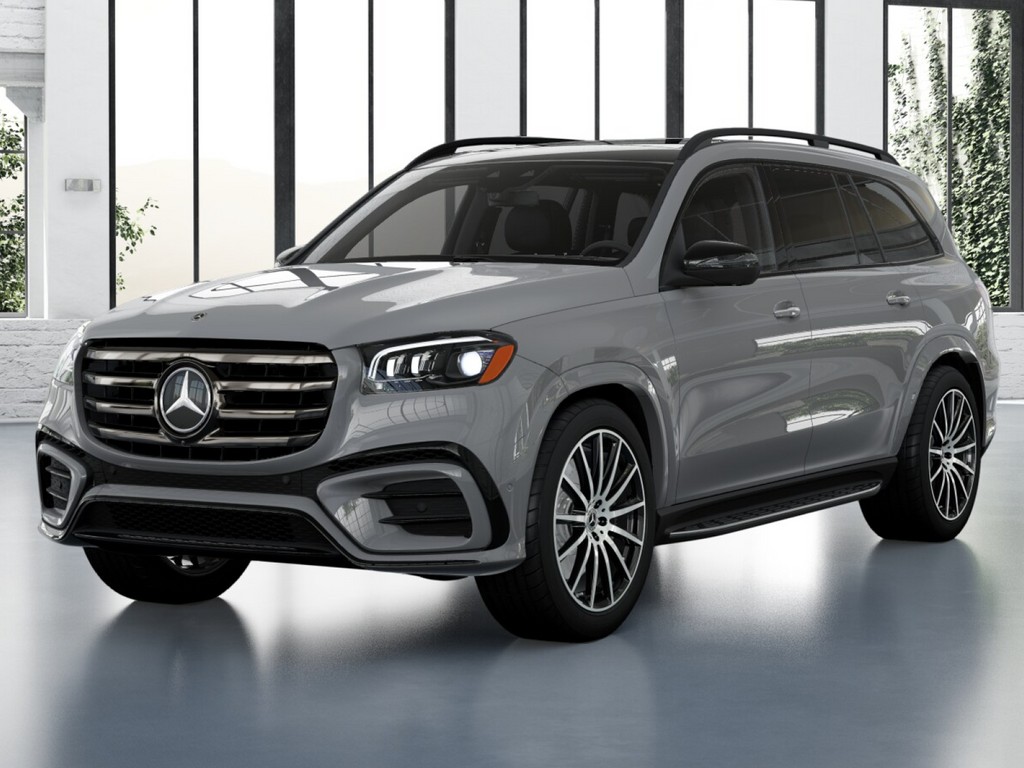
The GLS 580’s E-ACTIVE BODY CONTROL system represents cutting-edge technology that has proven problematic in real-world use. This system uses cameras to scan the road ahead and preemptively adjust the suspension for optimal comfort and handling.
However, the complex integration of cameras, processing units, and suspension actuators creates numerous potential failure points. The system frequently provides false readings, unexpected adjustments, or complete system failures that can affect vehicle handling and ride quality.
Mercedes-Benz’s mbrace connected services integrate the GLS 580 with cloud-based features including remote start, vehicle monitoring, and concierge services. These features frequently suffer from connectivity issues, server problems, and software glitches that render them unreliable.
The system’s dependence on cellular connectivity means that coverage issues can affect functionality, and software updates sometimes introduce new bugs while attempting to fix existing problems.
The GLS 580’s advanced lighting systems showcase the reliability challenges of implementing complex automotive technologies. The MULTIBEAM LED headlights include numerous control modules, sensors, and motorized components that can fail individually or in combination.
When these systems malfunction, replacement costs can be extremely high due to the integrated nature of the components and the requirement for specialized calibration equipment. The lighting systems are particularly vulnerable to moisture intrusion and electrical issues that can affect multiple functions simultaneously.
Interior technology features in the GLS 580, including the panoramic sunroof, power-adjustable seats with massage functions, and ambient lighting systems, represent additional potential failure points.
The panoramic sunroof’s complex motor and track system is prone to mechanical failures that can result in water leaks or complete system inoperability.
The power seats’ numerous motors, sensors, and control modules create multiple potential failure points, and when these systems fail, repairs often require extensive disassembly of seat components.
The GLS 580’s thermal management systems demonstrate the complexity challenges facing modern luxury vehicles. The vehicle incorporates multiple climate zones, heated and cooled seats, steering wheel heating, and HVAC systems that require precise integration and control.
When these systems malfunction, diagnosing problems can be extremely difficult due to the interconnected nature of the components and the multiple control modules involved in their operation.
Mercedes-Benz’s approach to software integration in the GLS 580 creates reliability challenges through over-the-air updates that can introduce new problems while attempting to fix existing issues.
The vehicle’s numerous control modules and software-dependent systems mean that updates can have unintended consequences, potentially affecting multiple vehicle functions. The complexity of the software architecture makes it difficult to isolate and fix specific problems without affecting other systems.
The GLS 580’s reliability issues are compounded by the vehicle’s integrated approach to system design, where multiple functions depend on common components and communication networks.
When central systems fail, the effects can cascade throughout the vehicle, affecting seemingly unrelated functions. This integration complexity makes diagnosis and repair more challenging and expensive, often requiring specialized dealer support and extended service times.
The vehicle’s numerous electronic control modules and their interdependencies create a web of potential failure points that can be difficult to diagnose and expensive to repair.
3. Audi Q8 Prestige
The Audi Q8 Prestige represents Audi’s flagship luxury SUV, incorporating the brand’s most sophisticated technologies and premium features. However, this technological tour de force has become a cautionary tale about the reliability challenges inherent in vehicles that prioritize cutting-edge features over proven dependability.
The Q8 Prestige’s extensive integration of advanced systems creates numerous potential failure points and complex interdependencies that frequently result in costly reliability issues.
Audi’s MMI infotainment system in the Q8 Prestige features dual touchscreens a 10.1-inch upper display and an 8.6-inch lower display that control nearly every vehicle function. While visually impressive, this system has proven problematic for many owners.
The dual-screen approach eliminates most physical controls, forcing drivers to navigate through multiple menu levels to access basic functions like climate control and audio settings.
The system frequently suffers from touchscreen responsiveness issues, where light touches aren’t registered or multiple touches are registered simultaneously, leading to unintended system activations.
The haptic feedback system in the Q8’s touchscreens attempts to simulate physical button presses but often fails to provide consistent feedback, making it difficult for drivers to know when commands have been successfully registered.
The system’s reliance on precise finger positioning and specific touch pressure creates usability challenges that are exacerbated by driving conditions, gloves, or screen contamination. When these touchscreens fail, owners lose access to essential vehicle functions, requiring expensive dealer visits for replacement or repair.
Audi’s Virtual Cockpit Plus system replaces traditional analog gauges with a fully digital 12.3-inch display that can be customized to show various information layouts. While technologically advanced, this system has proven prone to software glitches, display artifacts, and complete screen failures.
The system’s complexity means that simple gauge functions now depend on sophisticated graphics processors and software that can fail in ways that traditional analog gauges never could. When the Virtual Cockpit fails, drivers lose access to critical information, including speed, fuel level, and warning indicators.
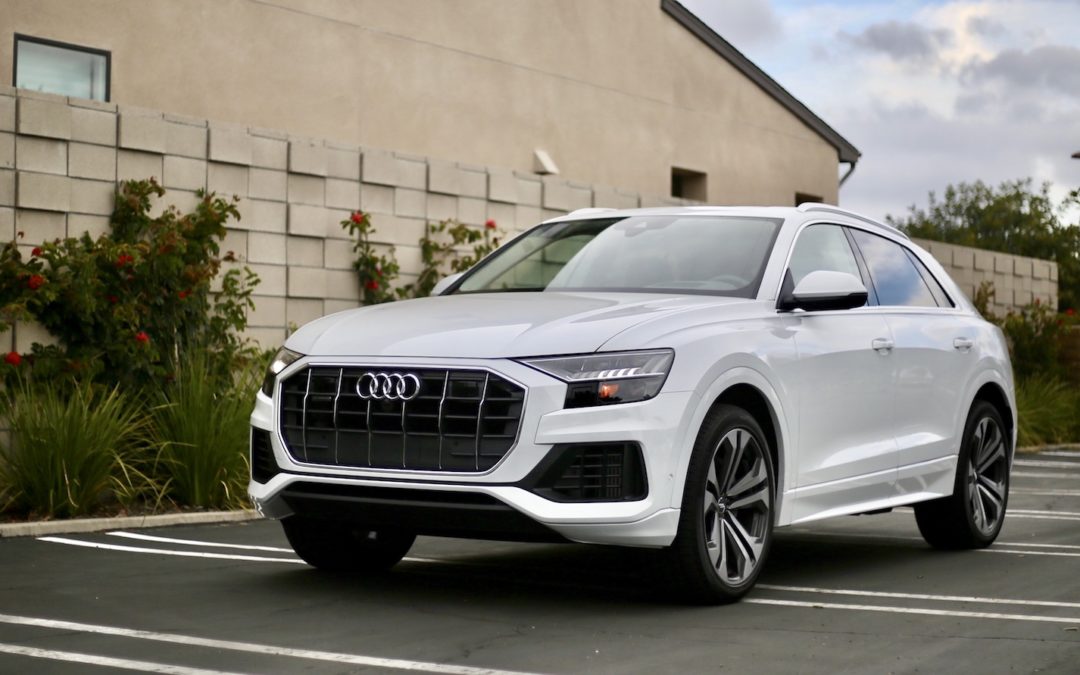
The Q8 Prestige’s adaptive air suspension system incorporates electronically controlled air springs and adaptive dampers that can adjust ride height and damping characteristics based on driving conditions.
This system frequently experiences air leaks, compressor failures, and sensor malfunctions that can leave the vehicle stuck in emergency mode with limited ride height adjustment. The system’s complexity requires specialized diagnostic equipment and trained technicians, making repairs expensive and time-consuming.
Audi’s Driver Assistance systems in the Q8 Prestige include adaptive cruise control, lane keeping assist, traffic jam assist, and park assist features that rely on multiple cameras, radar sensors, and ultrasonic sensors.
These systems frequently provide false warnings, unexpected interventions, or complete system shutdowns. The integration between multiple sensors creates numerous potential failure points, and when one component fails, it can disable multiple safety features simultaneously. The system’s sensitivity to environmental conditions means that rain, snow, or even bright sunlight can cause malfunctions.
The Q8’s Matrix LED headlights represent cutting-edge lighting technology that has proven problematic in real-world use. These headlights incorporate numerous individual LED elements that can be controlled independently to create adaptive lighting patterns.
However, the system’s complexity means that individual LED failures can affect the entire headlight assembly, often requiring complete replacement rather than simple bulb changes. The headlight control modules are prone to overheating and moisture intrusion, leading to expensive repairs that can cost thousands of dollars.
Audi’s quattro all-wheel drive system in the Q8 Prestige incorporates electronic controls and torque vectoring capabilities that add complexity to what was once a simple mechanical system.
The electronically controlled center differential and torque vectoring systems rely on numerous sensors and control modules that can fail, potentially affecting the vehicle’s handling characteristics and all-wheel drive functionality. When these systems malfunction, repairs often require specialized dealer support and expensive component replacements.
The Q8 Prestige’s reliability issues are compounded by the vehicle’s integrated approach to system design, where multiple functions depend on common components and communication networks.
When central systems fail, the effects can cascade throughout the vehicle, affecting seemingly unrelated functions. This integration complexity makes diagnosis and repair more challenging and expensive, often requiring specialized dealer support and extended service times.
4. Cadillac Escalade Platinum
The Cadillac Escalade Platinum represents General Motors’ flagship luxury SUV, incorporating the brand’s most advanced technologies and premium features.
However, this technological showcase has become notorious for reliability issues that stem from the ambitious integration of numerous cutting-edge systems into a single vehicle platform.
The Escalade Platinum’s extensive feature set creates multiple potential failure points and system interdependencies that frequently result in frustrating ownership experiences and costly repairs.
Cadillac’s infotainment system in the Escalade Platinum features a massive 38-inch curved OLED display that spans the entire dashboard width. While visually stunning, this system has proven problematic for many owners.
The curved OLED technology, while impressive, is prone to burn-in issues where static images become permanently etched into the display. The system’s complexity means that even minor display issues often require replacement of the entire expensive screen assembly rather than simple repairs.

The Escalade’s Super Cruise hands-free driving system represents cutting-edge autonomous driving technology that frequently malfunctions in real-world conditions.
The system relies on precise GPS mapping, cameras, and sensors to provide hands-free driving on compatible highways. However, the system often disengages unexpectedly, provides false warnings about driver attention, or fails to recognize mapped highways.
The system’s complexity means that software updates are frequently required to address functionality issues, but these updates sometimes introduce new problems.
The Escalade Platinum’s reliability issues are compounded by the vehicle’s ambitious approach to technology integration, where multiple advanced systems are expected to work together seamlessly.
When integration failures occur, the effects can cascade throughout the vehicle, affecting multiple functions simultaneously. This complexity makes diagnosis and repair more challenging and expensive, often requiring specialized dealer support and extended service times.
5. Lincoln Navigator Black Label
The Lincoln Navigator Black Label represents Ford’s luxury division’s flagship SUV, incorporating the brand’s most sophisticated technologies and premium features.
However, this technological showcase has become a prime example of the reliability challenges facing modern luxury vehicles that prioritize cutting-edge features over proven dependability.
The Navigator Black Label’s extensive integration of advanced systems creates numerous potential failure points and complex interdependencies that frequently result in costly reliability issues and frustrated owners.
Lincoln’s SYNC 4A infotainment system serves as the central control hub for the Navigator Black Label, featuring a 13.2-inch touchscreen that controls nearly every vehicle function.
While visually impressive, this system has proven problematic for many owners. The system frequently suffers from slow response times, complete system freezes, and unexpected reboots that can occur while driving.
The over-reliance on touchscreen controls means that when the system fails, owners lose access to essential vehicle functions including climate control, audio settings, and navigation.
The Navigator’s Co-Pilot360 Plus driver assistance suite incorporates numerous advanced features that rely on multiple cameras, radar sensors, and ultrasonic sensors. These systems frequently provide false warnings, unexpected interventions, or complete system shutdowns.
The adaptive cruise control system has been particularly problematic, with reports of unexpected acceleration or deceleration that can be dangerous in traffic situations. The system’s sensitivity to environmental conditions means that weather changes or lighting variations can cause malfunctions.
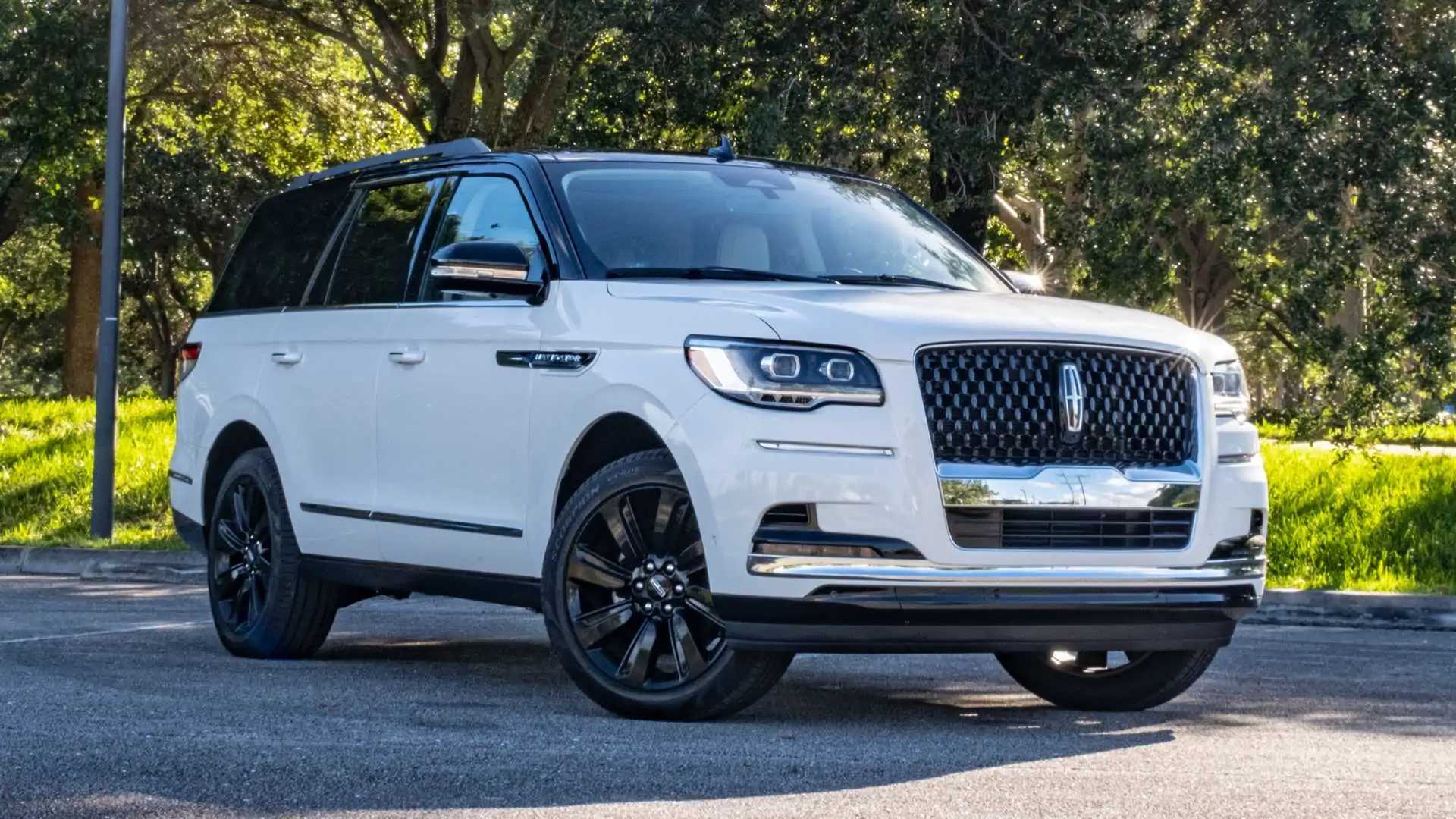
Ford’s approach to electrical architecture in the Navigator Black Label creates reliability challenges through the integration of numerous control modules and communication networks.
The vehicle incorporates multiple electronic control units that must communicate seamlessly to provide proper functionality. When communication errors occur between modules, the effects can cascade throughout the vehicle, affecting seemingly unrelated functions.
This complexity makes diagnosis difficult and expensive, often requiring specialized dealer equipment and extensive labor time. The Navigator Black Label’s air suspension system incorporates electronically controlled air springs and adaptive dampers that can adjust ride height and damping characteristics based on driving conditions and load.
This system frequently experiences air leaks, compressor failures, and sensor malfunctions that can leave the vehicle stuck in emergency mode with limited ride height adjustment. The system’s complexity requires specialized diagnostic equipment and trained technicians, making repairs expensive and time-consuming.
Lincoln’s Revel premium audio system in the Navigator Black Label incorporates numerous amplifiers, speakers, and processing units that create multiple potential failure points.
The system’s complexity means that individual component failures can affect the entire audio system, often requiring expensive replacements and extensive disassembly of interior components.
The integration with the vehicle’s infotainment system means that audio problems can sometimes be traced to software issues rather than hardware failures.
The Navigator Black Label’s reliability issues are compounded by the vehicle’s integrated approach to system design, where multiple functions depend on common components and communication networks.
When central systems fail, the effects can cascade throughout the vehicle, affecting seemingly unrelated functions. This integration complexity makes diagnosis and repair more challenging and expensive, often requiring specialized dealer support and extended service times that can leave owners without their vehicles for extended periods.
Also Read: 5 Old-School Engines That Beat Modern Ones and 5 That Don’t Belong Anymore

